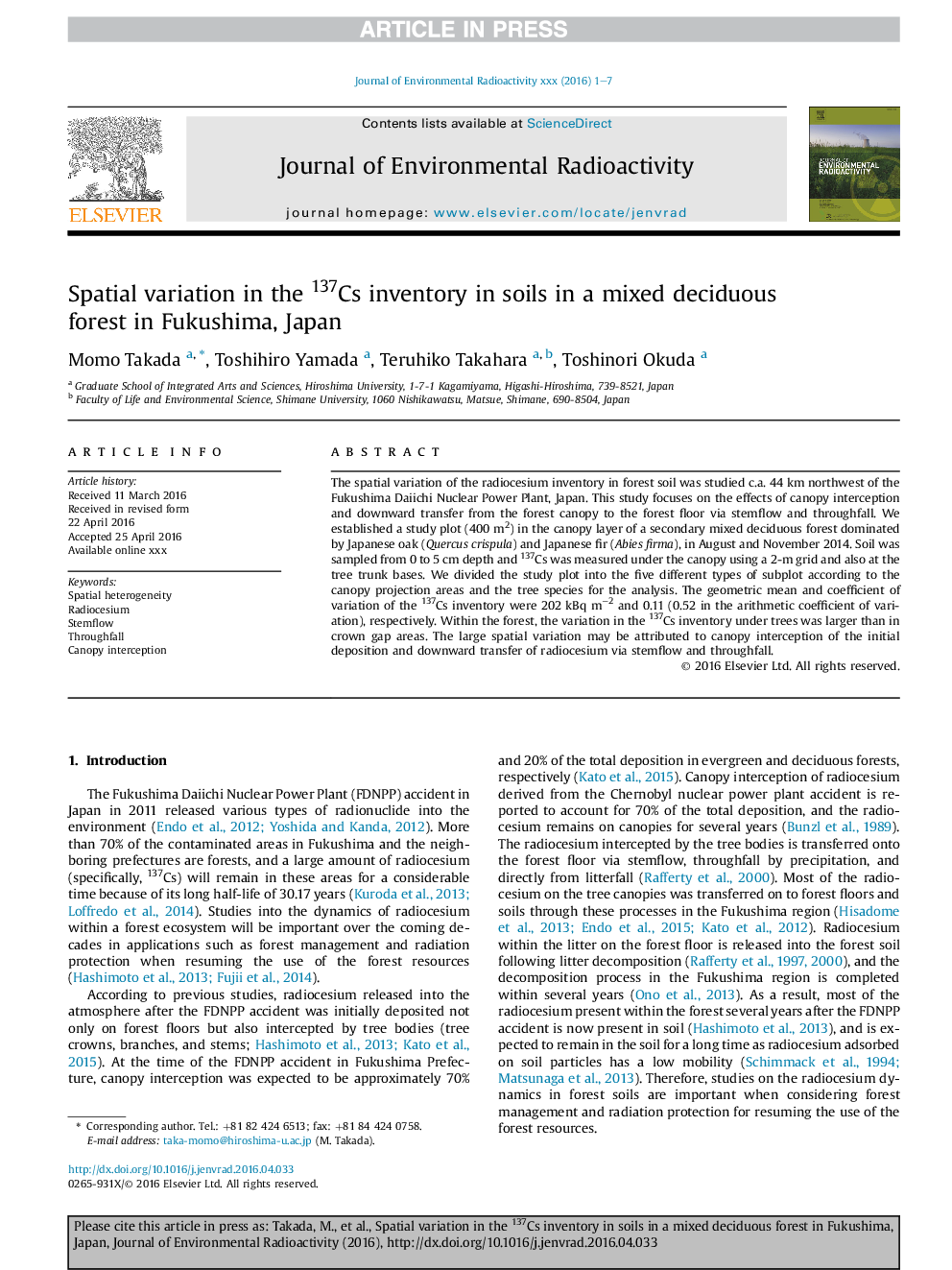| Article ID | Journal | Published Year | Pages | File Type |
|---|---|---|---|---|
| 8081713 | Journal of Environmental Radioactivity | 2016 | 7 Pages |
Abstract
The spatial variation of the radiocesium inventory in forest soil was studied c.a. 44 km northwest of the Fukushima Daiichi Nuclear Power Plant, Japan. This study focuses on the effects of canopy interception and downward transfer from the forest canopy to the forest floor via stemflow and throughfall. We established a study plot (400 m2) in the canopy layer of a secondary mixed deciduous forest dominated by Japanese oak (Quercus crispula) and Japanese fir (Abies firma), in August and November 2014. Soil was sampled from 0 to 5 cm depth and 137Cs was measured under the canopy using a 2-m grid and also at the tree trunk bases. We divided the study plot into the five different types of subplot according to the canopy projection areas and the tree species for the analysis. The geometric mean and coefficient of variation of the 137Cs inventory were 202 kBq mâ2 and 0.11 (0.52 in the arithmetic coefficient of variation), respectively. Within the forest, the variation in the 137Cs inventory under trees was larger than in crown gap areas. The large spatial variation may be attributed to canopy interception of the initial deposition and downward transfer of radiocesium via stemflow and throughfall.
Related Topics
Physical Sciences and Engineering
Energy
Nuclear Energy and Engineering
Authors
Momo Takada, Toshihiro Yamada, Teruhiko Takahara, Toshinori Okuda,
